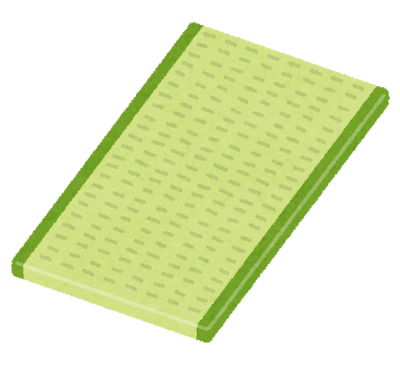Hello again! It is the blog: How Unique Japan! How are you guys?
Today, we would like to ask you first. Have you seen the traditional Japanese house?
If you did, there is no doubt that you saw the floor in a living room covered with a green and weedy seat.
Indeed. This time, we will touch on the unique Tatami seat.
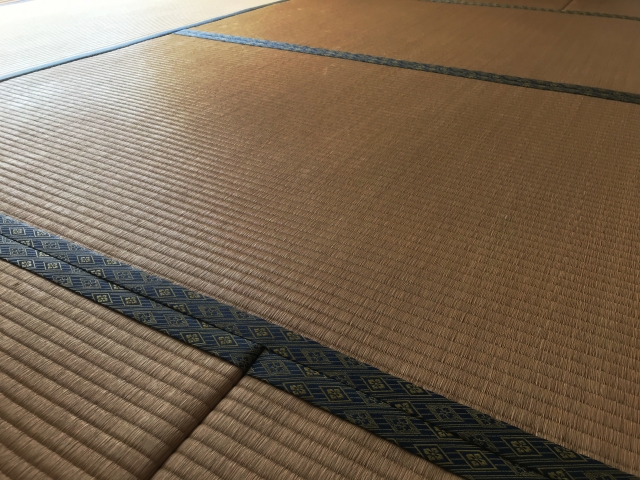
The seat is made from rush (a plant) and straw.
It has an ancient history. However, it remains popular.
Interestingly, the current measurement for the size of the room still relies on how many Tatami seats fit within the room.
The calculation is that.
Ichi jou (一畳, one tatami seat) is 182cm (71.65 inches) x 91cm (35.82 inches).
Hence, the size of rooms with roku jou (六畳) refers to six tatami mats.
This size is quite popular for Japanese rooms.
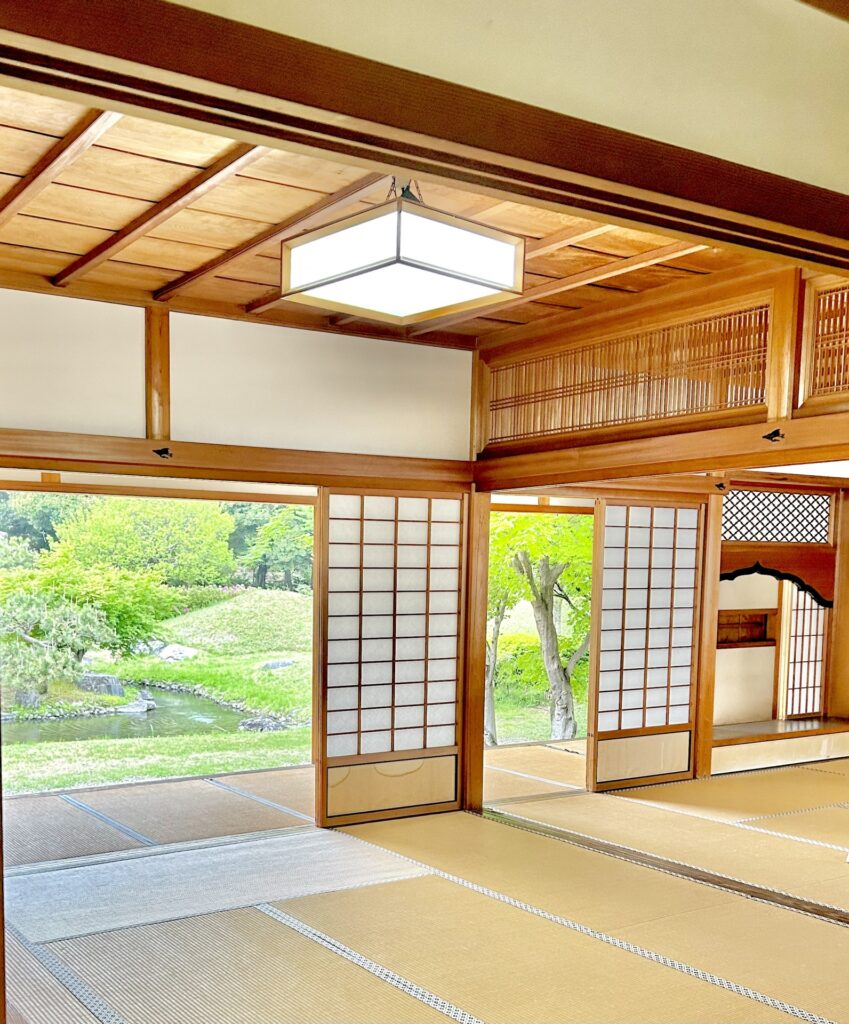
But, how has the seat been a good friend with us Japanese for so long?
The history
The origin is surprisingly old. A historical theory suggests it was born in the Jomon era (from 13000 BC to 300 BC!).
The ancient Japanese lived in a house similar to a tent, and then started to put a bunch of straw on the floor. That was the beginning.
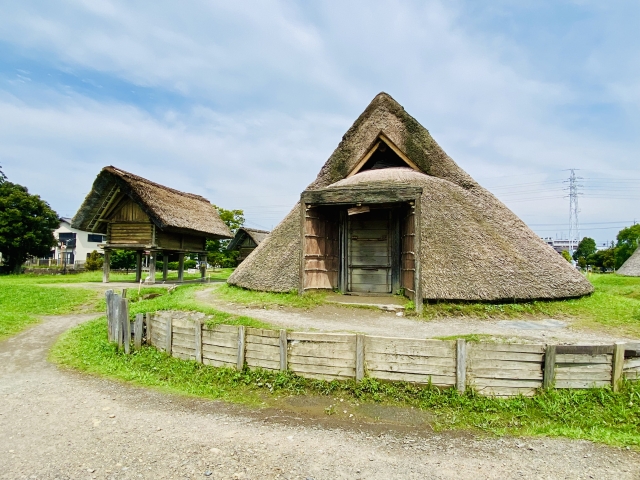

After centuries, the straws were organized into a thick seat with rushes by sewing on the surface. It was around the Nara and Heian era (Nara was from 645 AD to 794, and Heian was from 794 to 1185).
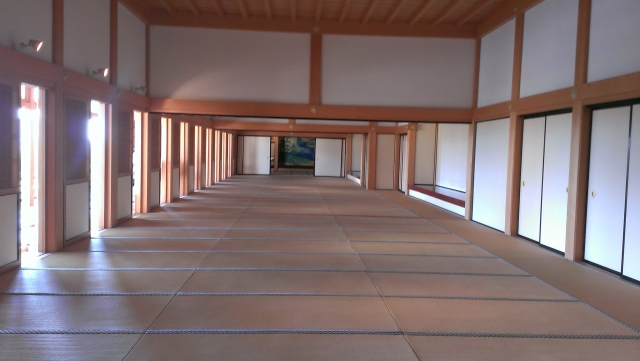
Why did the old Japanese improve the straws for the Tatami seat?
The invention was for nobles. They thought uncovered floors (rough wooden boards) in gorgeous buildings were cold, physically and mentally. Thus, they created the Tatame seat to cover the floors.
The merit of the Tatami seat

So, it was an invention from high society/nobility as a luxury option.
However, it has many advantages over wooden floors. The features include elasticity, thermal insulation properties/heat retention, and flame retardance. It is not yet. It can also clean the air.
The secret of those various features is that. The Tatami seat is made from rush and straw.
Let’s see how those plants work.
Both plants have a unique structure. There are many tiny holes inside each fiber, like a sponge.
The Tatami seat can serve as a shock absorber for falls or slips due to its elasticity.

There are more advantages. The structure, like a sponge, also absorbs the wetness in the room when a living room has a high humidity level.
On the other hand, it relieves the absorbed water when the weather/room is dry. So, it is similar to breathing. (thermal insulation)
The advantages are not over yet. The seat works with the inhale and exhale. That means it can catch tiny dust floating in the air. (air cleaner)
It is incredible. But you might get the idea about one weakness of the Tatami seat. So, you could say, “Oh, it works well, but the fire would be the biggest enemy of it because it is from plants”.
Yap. You are light. However, the Tatami seat surprisingly has more fire resistance than a plant.
It is due to the inside of the seat. Do you remember that it needs two kinds of plants? It is rush and straw. So, the surface uses the rush sewn. On the other hand, there is a bunch of straw inside. The amount of straws is unbelievable.

Before the base was compressed to 5 cm (2 inches), the diameter of the bunch of straw was approximately 40 cm (15.7 inches). So tight!
(Thanks for the fit from sewing.)
Such a density can resist fire. It is because the inside doesn’t have the space for CO2 to come in. So, it is the final feature of the Tatami. It is the flame retardance.
One more fun fact/item
So, we Japanese have utilized the seat. How do we replace them when they become worn out and older?
It is where one tool comes in. We use a sharp, thick needle that resembles an ice pick.
It is named Eyeleteer/Senmai Doushi (with the translation, it means stabbing through a thousand pieces).
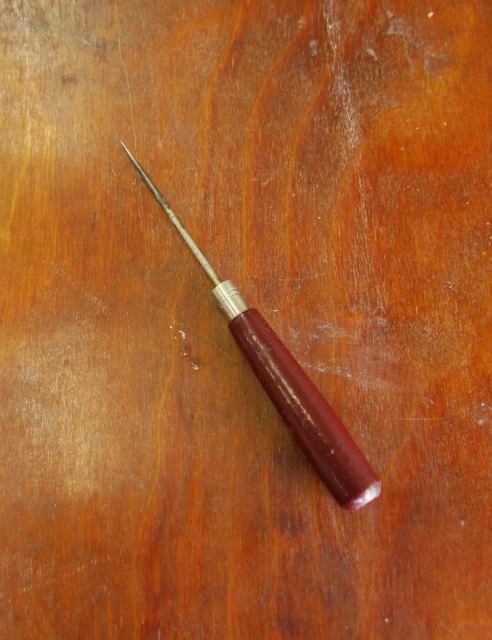
So, we stab it into the gap between the edge of the Tatami seat covered with a long piece of cloth and the body. Then, we pull them out of the floor.
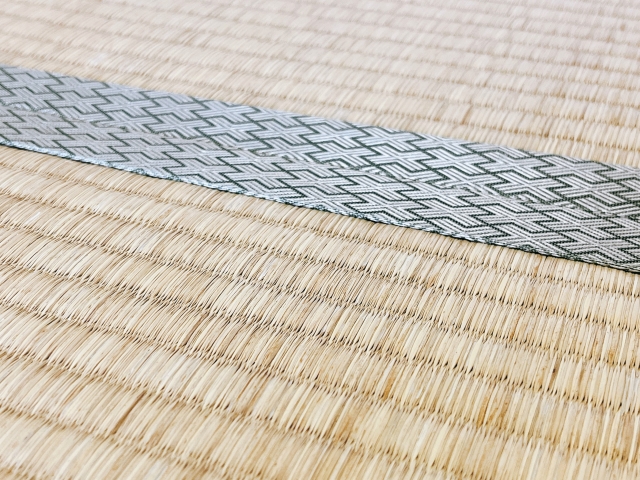
To close
It is a brief explanation of the seat. However, we can add one more feature. That is scent/smell. The Tatami seat has a weedy aroma that makes us relaxed.
If you visit the old living room in Japan, we recommend you take a deep breath. You might deserve to lie down on the seat like on grass on a sunny day (when those seats are new).

It is all for this article. BUT! It is not yet.
We have more articles categorized into four topics. They are about Japanese lifestyle, food, the Edo era, and religions. If you are still interested in Japanese features, please read them!
OK! See you again for the next article!!
